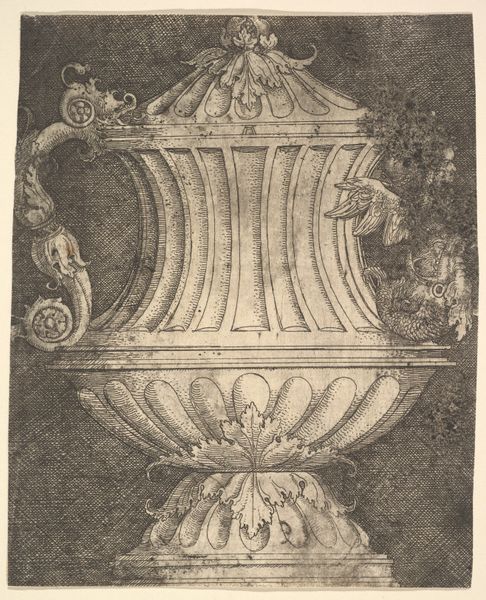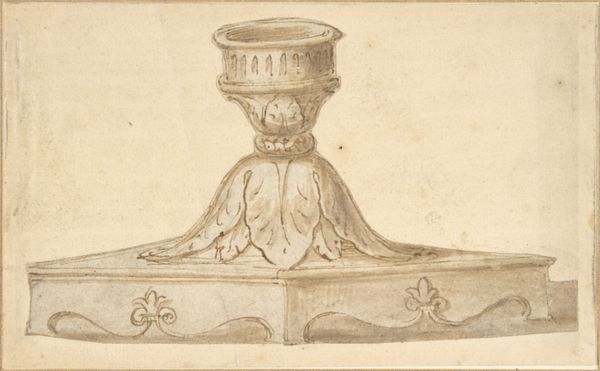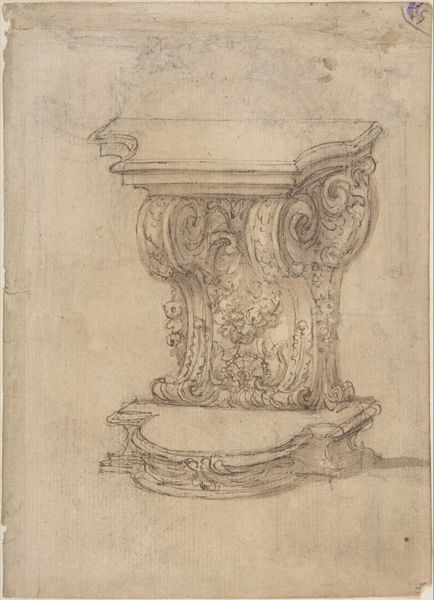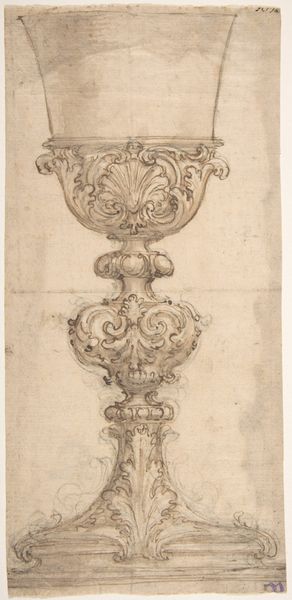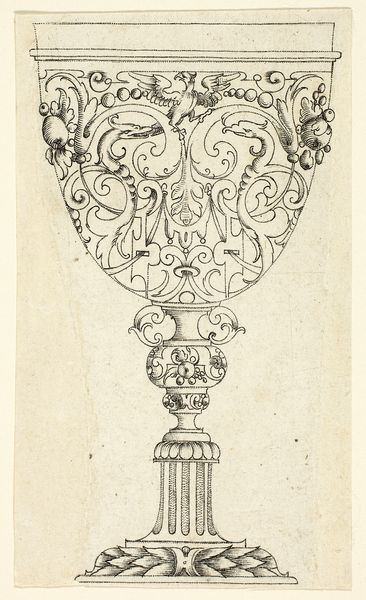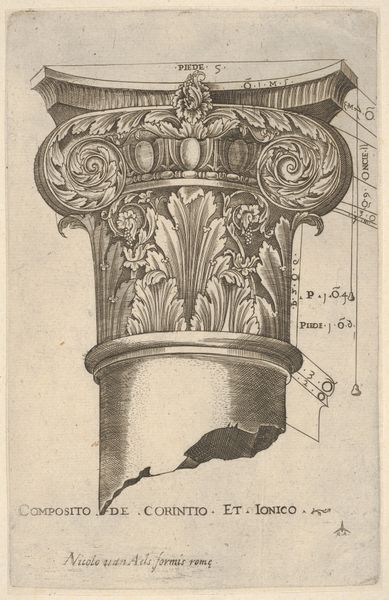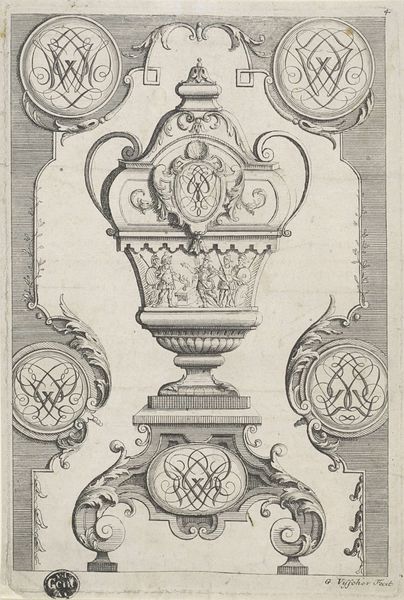
Architectural Details: Base, Capital, and Mask after 1515
0:00
0:00
drawing, print, paper, engraving
#
drawing
# print
#
classical-realism
#
paper
#
form
#
ancient-mediterranean
#
line
#
academic-art
#
engraving
Dimensions: 141 × 108 mm
Copyright: Public Domain
Giovanni Antonio da Brescia created this engraving, "Architectural Details: Base, Capital, and Mask," around 1500-1525. The column embodies classical ideals, while the mask presents a more ambiguous symbolism. The acanthus leaves adorning the capital are a direct inheritance from ancient Greece, symbolizing endurance and rebirth. We see echoes of this motif across centuries, from Roman temples to Renaissance friezes. Observe also the grotesque mask, a face that is simultaneously human and animalistic. Such masks, often associated with Bacchus, embody the intoxicating powers of nature and the subconscious. This image has a psychological weight; its combination of order and chaos speaks to the duality within human experience. The fractured base suggests the inevitable decay of even the most monumental structures. These symbols persist in our collective memory, resurfacing in various forms, echoing through time and continuously reshaping our understanding of beauty, power, and the human condition.
Comments
No comments
Be the first to comment and join the conversation on the ultimate creative platform.

